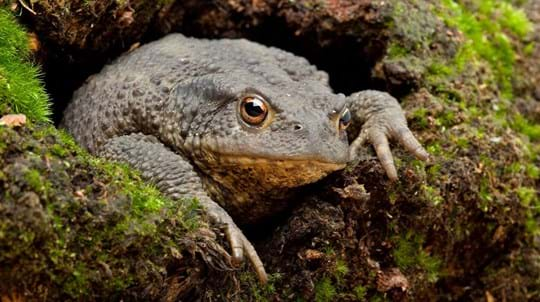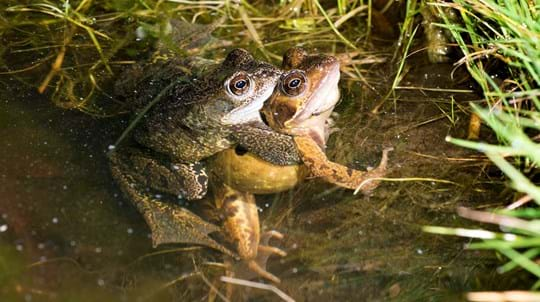
Credit: Margaret Welby / Alamy Stock Photo
How do common frogs hibernate?
During the winter months, common frogs spend their time resting in the mud at the bottom of ponds, under piles of logs or in compost heaps. They may still venture out on warmer days in search of food.












